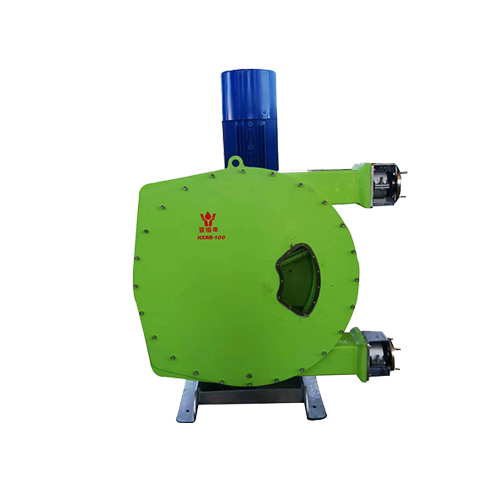How Rubber Lobe Pumps Enhance Efficiency in Wastewater Treatment Processes
Jun 11,2025

How Rubber Lobe Pumps Enhance Efficiency in Wastewater Treatment Processes
Table of Contents
1. Introduction to Rubber Lobe Pumps in Wastewater Treatment
2. Understanding Wastewater Treatment Processes
2.1 The Importance of Effective Wastewater Management
2.2 Key Components of Wastewater Treatment Systems
3. What Are Rubber Lobe Pumps?
3.1 Design and Functionality of Rubber Lobe Pumps
3.2 How Rubber Lobe Pumps Work
4. Advantages of Rubber Lobe Pumps in Wastewater Treatment
4.1 Enhanced Efficiency and Performance
4.2 Reduced Operational Costs
4.3 Versatility and Adaptability
5. Comparing Rubber Lobe Pumps with Other Pumping Technologies
5.1 Centrifugal Pumps vs. Rubber Lobe Pumps
5.2 Positive Displacement Pumps and Their Limitations
6. Applications of Rubber Lobe Pumps in Wastewater Treatment
6.1 Municipal Wastewater Treatment Facilities
6.2 Industrial Wastewater Processing
7. Maintenance and Care for Rubber Lobe Pumps
7.1 Routine Maintenance Practices
7.2 Troubleshooting Common Issues
8. Future Trends in Pump Technology for Wastewater Management
8.1 Innovations in Rubber Lobe Pump Design
8.2 The Role of Automation in Pump Performance
9. Frequently Asked Questions (FAQs)
10. Conclusion
1. Introduction to Rubber Lobe Pumps in Wastewater Treatment
In the realm of wastewater treatment, the choice of pumping technology can significantly impact operational efficiency and overall system performance. **Rubber lobe pumps** stand out as a reliable solution, offering unique advantages that enhance the treatment process. Their innovative design and functionality not only improve the handling of various fluids but also contribute to cost savings and operational reliability.
2. Understanding Wastewater Treatment Processes
To appreciate the role of rubber lobe pumps, it is essential to understand wastewater treatment processes thoroughly.
2.1 The Importance of Effective Wastewater Management
Effective wastewater management is crucial for environmental safety and public health. With increasing industrial activities and urban population growth, the demand for efficient wastewater treatment solutions has escalated. Wastewater treatment processes facilitate the removal of contaminants from water, making it safe for discharge or reuse.
2.2 Key Components of Wastewater Treatment Systems
Wastewater treatment systems comprise various components, including **pumps, aerators, clarifiers, and filters**. Each component plays a vital role in ensuring that the wastewater is treated effectively. Pumps are particularly essential, as they transport the wastewater through different stages of treatment.
3. What Are Rubber Lobe Pumps?
Rubber lobe pumps are a type of positive displacement pump characterized by their lobed rotors that move fluid through the pump chamber.
3.1 Design and Functionality of Rubber Lobe Pumps
The design of rubber lobe pumps includes two or more lobes that rotate in synchronization, creating a series of **sealed chambers** that transport fluid. This design minimizes shear and turbulence, making it ideal for handling sensitive fluids often found in wastewater.
3.2 How Rubber Lobe Pumps Work
As the lobes rotate, they trap the fluid in the cavities formed between them. This action creates a vacuum that draws more fluid into the pump, effectively moving it through the system. The smooth operation of rubber lobe pumps ensures a consistent flow rate and pressure, which is critical for efficient wastewater treatment.
4. Advantages of Rubber Lobe Pumps in Wastewater Treatment
Rubber lobe pumps offer several key advantages that enhance their performance in wastewater treatment applications.
4.1 Enhanced Efficiency and Performance
Rubber lobe pumps are designed to handle high-viscosity fluids and sludges without compromising efficiency. Their ability to maintain a steady flow minimizes the risk of clogging, leading to smoother operations.
4.2 Reduced Operational Costs
By reducing the need for maintenance and minimizing downtime, rubber lobe pumps contribute to lower operational costs. Their robust design reduces wear and tear, leading to longer service life and fewer replacements.
4.3 Versatility and Adaptability
These pumps can handle a wide range of fluids, including those with solid particles, making them suitable for various wastewater treatment applications. Whether used in municipal or industrial settings, rubber lobe pumps adapt to different operational needs.
5. Comparing Rubber Lobe Pumps with Other Pumping Technologies
Understanding how rubber lobe pumps compare with other technologies can help optimize decision-making in wastewater treatment.
5.1 Centrifugal Pumps vs. Rubber Lobe Pumps
While **centrifugal pumps** are widely used, they can struggle with viscous fluids and may require more maintenance. Rubber lobe pumps, on the other hand, excel in handling higher viscosity fluids with ease.
5.2 Positive Displacement Pumps and Their Limitations
While positive displacement pumps can handle various fluids, they often require precise control mechanisms to maintain consistent flow rates. Rubber lobe pumps provide a more straightforward solution, with reliable performance even under varying conditions.
6. Applications of Rubber Lobe Pumps in Wastewater Treatment
Rubber lobe pumps find numerous applications within wastewater treatment processes.
6.1 Municipal Wastewater Treatment Facilities
In municipal facilities, rubber lobe pumps are critical for transporting sewage and sludge through different treatment stages. Their reliability ensures that treatment processes run smoothly and efficiently.
6.2 Industrial Wastewater Processing
Industrial facilities generate wastewater with varying characteristics. Rubber lobe pumps cater to these diverse needs, handling challenging fluids like chemical sludges and emulsified oils effectively.
7. Maintenance and Care for Rubber Lobe Pumps
Proper maintenance is key to maximizing the performance and lifespan of rubber lobe pumps.
7.1 Routine Maintenance Practices
Routine inspections and regular maintenance schedules help identify potential issues early. Lubricating moving parts and checking for wear can prevent costly repairs down the line.
7.2 Troubleshooting Common Issues
Common pump issues, such as unusual noises or fluctuations in flow rate, should be addressed promptly. A systematic troubleshooting approach can resolve many problems before they escalate.
8. Future Trends in Pump Technology for Wastewater Management
The future of wastewater treatment technology is promising, with rubber lobe pumps at the forefront.
8.1 Innovations in Rubber Lobe Pump Design
Advancements in materials and engineering techniques are leading to more efficient pump designs. Enhanced rubber compounds and improved manufacturing processes are set to increase the durability and performance of these pumps.
8.2 The Role of Automation in Pump Performance
Automation technologies are being integrated into wastewater treatment systems, allowing for real-time monitoring and control of pump operations. This integration enhances efficiency and allows for the optimization of treatment processes.
9. Frequently Asked Questions (FAQs)
1. What are rubber lobe pumps used for in wastewater treatment?
Rubber lobe pumps are primarily used for transporting sewage, sludge, and other viscous fluids through various stages of wastewater treatment.
2. How do rubber lobe pumps improve system efficiency?
Their unique design allows them to handle high-viscosity fluids without clogging, resulting in a more consistent flow and reduced downtime.
3. Are rubber lobe pumps suitable for industrial applications?
Yes, they are highly versatile and can effectively manage challenging fluids found in industrial wastewater.
4. What maintenance is required for rubber lobe pumps?
Routine inspections, lubrication of moving parts, and monitoring for wear are essential to maintain optimal performance.
5. How do rubber lobe pumps compare to centrifugal pumps?
Unlike centrifugal pumps, rubber lobe pumps are better suited for handling viscous fluids and provide a more consistent flow rate.
10. Conclusion
Rubber lobe pumps are revolutionizing the wastewater treatment industry, offering enhanced efficiency, reduced operational costs, and the ability to handle a wide range of fluids. Their unique design and functionality make them an invaluable asset in both municipal and industrial applications. By investing in rubber lobe pump technology, facilities can improve their wastewater management processes, ensuring effective treatment and environmental compliance. As the industry evolves, these pumps will continue to play a crucial role in shaping the future of wastewater treatment.
PREVIOUS:
Contact Us
E-mail :
sales@yaquanpump.com
service@yaquanpump.com
Phone/WhatsApp:
+44 7301702546
+63 9452052801
Address:
Room B208, Building 2, North Hongqiao Songri Center, No.215 Gaochao Road, Jiading District, Shanghai









